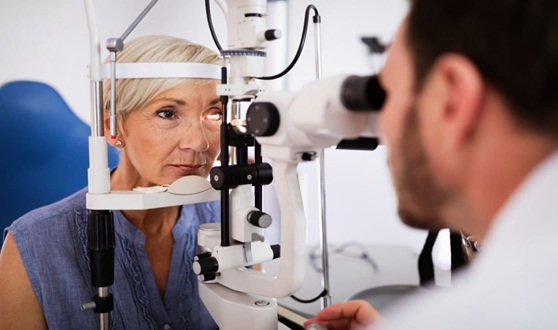All about Low vision and Low vision devices guide
What is Low Vision?
Low vision is diagnosed when you can’t fully correct your vision with glasses, contact lenses, or eye surgery. It’s often accompanied by blurred vision, blind spots, and tunnel vision. This condition is also sometimes called “legal blindness.”
Visually impaired people are unable to take part in activities most of us take for granted. Low vision prevents them from driving, reading, or typing on their computer. This is usually a result of degenerative eye diseases that generally affect older adults.
Low vision is a condition that a staggering number of people suffer from. It can be hard for those afflicted with it to live a normal life. There are currently 25 million adults in the United States who have low vision, and this number is only going to increase as the population continues to age.
Many people with low vision experience difficulty with many trivial tasks. Some of these difficulties include reading, driving, facial recognition, and color vision. The list is not exhaustive, but it does show how people with low vision have difficulties navigating their way through life.
Symptoms of low vision
Low vision can cause many different symptoms. Loss of central vision, loss of peripheral vision, and even night blindness are all possible. Hazy vision, blurred vision, and other issues are also common.
Causes of low vision
Low vision can be hereditary or caused by an eye injury, but it is most often the result of ocular disease. If you have poor vision that can’t be corrected with eyeglasses or contact lenses, you should call an eye doctor. This is because it can be a sign of serious eye disease.
Here are just a few of the most common eye diseases that can cause low vision and other vision-related problems:
Cataracts
Clouding of the eye’s lens. Cataracts are usually gradual, developing over a period of many years. The main symptom is blurry vision. It can be like looking through a fogged window that won’t clean up. When a cataract impacts an individual’s usual activities, they can opt for a simple surgery to replace the cloudy lens with a clear, artificial one. This is generally safe and outpatient.
Macular degeneration
Macular degeneration is an eye disease that causes vision loss. There are two types: wet and dry. Wet macular degeneration is caused by leaky blood vessels growing under the retina. Dry macular degeneration, on the other hand, affects the central part of the retina. Aside from blurry vision, there are other symptoms such as straight lines appearing wavy and colors appearing faded. AREDS (a combination of vitamins) and surgery may be a way to treat this condition.
Diabetic retinopathy
Diabetic retinopathy is a complication of diabetes that affects the eyes. It comes from damage to the blood vessels in the tissue at the back of the eye (retina), which sometimes happens when people with diabetes don’t control their blood sugar well. Sometimes, it’s just a matter of seeing your doctor and carefully managing your condition, but when it gets worse, it may mean laser treatment or surgery.
Glaucoma
A glaucoma is a group of eye conditions that can lead to blindness. The most common form (open-angle glaucoma) causes gradual vision loss, but it can be treated with eye drops or surgery. Angle-closure glaucoma is much rarer, but it is usually a medical emergency – its symptoms are sudden visual disturbance, pain and nausea. Treatment includes drops and medication, as well as surgery.
Low vision diagnose
If you’re having a hard time seeing, you may be diagnosed as having low vision. Your eye doctor will do a dilated eye test and measure your near, distance, central, and peripheral vision. They’ll also put some drops in your eyes so they can get a better look at the inner structures of your eyes.
Any sign of a low vision condition in your eyes can be detected with an eye examination by a qualified professional. The sooner you visit the ophthalmologist, the more you can explore different ways to restore your vision.
Living with low vision
Low vision can be very difficult for a person to live with. It can lead to impaired performance in daily activities, and make it more difficult for them to enjoy their life. There is no treatment for low vision. However, there are many different devices that can help people with low vision engage in activities they once enjoyed. These devices can give them back their independence and quality of life.
Low vision devices
Low vision devices are devices that help to enhance vision clarity.
Head-mounted magnifiers
Low vision aids such as magnifying glasses are useful for reading, writing, and other close-up tasks. These devices offer increased magnification with a special headband to keep the lens firmly in front of your eyes eg. eSight .
Handheld magnifiers
The low vision handheld magnifier is a valuable resource for those who have difficulty seeing at close range. While it can serve multiple purposes, it’s especially helpful when you need to read labels or product tags that you find in the store. It is made small enough to fit in your hand and can be used as either a traditional magnifying glass or an electronic magnifier.
You may be wondering if you need to use a handheld or surface-resting magnifier. A general rule of thumb is that, for reading, you want to use a traditional handheld magnifier. If, however, you want to capture an image or freeze the screen, then the electronic handheld magnifier is the way to go. Both styles provide excellent assistance for usage at home and on the go.
Desktop magnifiers
Desktop magnifiers are low vision devices with higher levels of magnification. The specialized features like viewing modes make these perfect for people who need a larger font or a bigger screen. For reading, these devices are ideal and the user can adjust them to their needs.
Low vision aids are usually an assistive device, gadget, or tool that helps the person suffering from this disability to see better. For example, a bioptic telescope is able to give increased magnification for distance viewing. Another common low vision aid is a computer screen that magnifies text or provides specialized lighting. Audio recordings can also be a good way to make information accessible for low vision sufferers.















